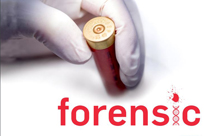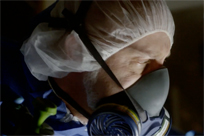ESR's scientists assist the justice system to resolve cases like homicides, sexual assaults and serious violent assaults by:
- Detecting, collecting and preserving forensic evidence including blood, fibres, impressions, glass and fabric damage
- Characterising evidence and interpreting the results through laboratory analysis
- Reconstructing and representing events
- Preparing reports and presenting evidence in court.
We also provide specialist consulting services relating to stolen vehicles, or vehicles involved in criminal matters. Our expertise covers the identification of vehicle occupants, number restorations, paint comparisons and physical (parts) comparisons. Our forensic laboratories are accredited by the ANSI National Accreditation Board (ANAB) to the international standard of ISO/IEC 17025. ANAB provides accreditation services to public and private sector organisations and is a subsidiary of the American National Standards Institute (ANSI).
Laser scanning and 3D imagery
ESR is using new technologies to record a crime scene, accurately measuring the position, size and orientation of evidence. Laser scanning and 3D imagery can also superimpose complex evidence such as bloodstain patterns and bullet trajectories. Find out more about laser scanning and 3D imagery.
Bloodstain Pattern Analysis
Bloodstain Pattern Analysis (BPA) is the science of studying the bloody aftermath of violent crime and accidents to help investigators gather evidence. Read more about our expertise in this field.
Forensic DNA
DNA profiling is a process of identifying a specific pattern of DNA from a person or sample of bodily tissue. ESR provides a range of DNA profiling techniques to the criminal justice community in New Zealand and around the world. Find out more about ESR's expertise in DNA profiling.
Physical evidence analysis
Our scientists can analyse substances such as glass, paint, fire debris and fibres which can provide crucial evidence in a case.
This kind of non-biological evidence can provide vital links between the victim, suspect and crime scene. We provide specialised investigation services in forensic examination and analysis to private investigators, members of the public, lawyers and companies.
- Glass fragments - Our specialised science techniques can help identify the possible source of glass particles. Using microscopic techniques for precise measurement of the refractive index of the smallest glass particles, our analysts can determine the origin of very tiny glass fragments and the techniques used can easily be extended to measurement of refractive index of almost any translucent or transparent microscopic particles.
- Fibre analysis and comparisons - Our scientists apply specialised techniques to collect and identify transferred fibres, and compare them with suspected donor garments. Fibres can provide strong evidence of physical contact between persons in a wide variety of cases. ESR's experts can determine the thickness, colour, cross-sectional shape, optical properties and chemical composition of a single fibre.
- Microanalysis - We offer a wide range of optical, instrumental and chemical techniques for the identification of trace evidence and possible source comparisons including glass, natural fibres, paint fragments, plaster, polymers and textile fibres.
- Serial number restoration - Our specialists use sophisticated technology to restore the original serial numbers on car chassis, motorcycle frames, engine blocks and most metal surfaces.
- Fire debris analysis - Our instrumental analysis of fire debris can detect hydrocarbon fuels (such as petrol, diesel) and solvents (such as methylated spirits, acetone). The analysis is extremely sensitive, detecting in the parts per million range and can help fire investigators determine whether an accelerant was used to start a fire.
- Footwear and tyre impressions - Our scientists can identify impressions as belonging to a shoe or tyre through matching class (pattern) and individualising (damage) characteristics present on both the impression and shoe/tyre. They are experienced at preserving and/or recording impressions and enhancing faint impressions.
- Firearms and toolmarks - ESR firearm investigation services include comparison of recovered projectiles and cartridges to identify the firearms that fired them; tracking of projectile trajectory; identifying residues associated with firing a firearm and estimating the distance between firearm and target. Our toolmark investigation services include comparing toolmarks at the scene with tools recovered from suspects.
To find out more about ESR's forensic work, read about our Forensic training and consultancy work.
For more information - forensic@esr.cri.nz

Forensic - crime science and intelligence
Read more about our forensic work in this ESR publication

About meth and our drug expertise
Find out more about methamphetamine and our work with it.

